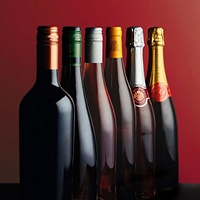Portion size guide
Portion size guide
A balanced diet is about how much we eat as well as what we eat. To stay healthy, we need a certain amount from each food group over the course of a day. Many of us find it hard to judge what a recommended portion size is, so here are some tips to help you control what goes on your plate.
What should I be eating?
What should I be eating?
To help you get the right balance of foods, you can find plenty of visual guides online. The Eatwell Guide is one; it shows the proportions of foods we should be aiming to eat each day. It’s not about depriving yourself of certain types of food – variety is the key.
Fruit and vegetables
Fruit and vegetables
The World Health Organisation recommends eating at least five 80g portions of fruit and veg a day. While this is a good benchmark, 10 portions a day further lowers your risk of long-term disease, and for optimum gut health, we should aim for at least 30 different plant-based foods each week.
Fruit and vegetables (fresh, frozen, tinned, dried or juiced) should make up over a third of what we eat in a day. Juices and smoothies count, but limit them to a combined total of 150ml a day because crushing fruit into juice releases the sugars it contains.

Protein
Meat is a good source of protein, but go for lean cuts and eat less red meat and processed foods such as sausages and ham. Pulses, lentils and nuts are high in protein and are a great alternative to meat as they’re low in fat and a good source of fibre. Aim for at least two portions of fish every week, one of which should be an oily fish such as mackerel or sardines.
Carbohydrates
Starchy food should make up just over a third of what we eat. Wholegrain is higher in fibre, so go for brown rice and bread and wholewheat pasta when you can. Carbs provide us with energy and a range of nutrients in our diet.
Fat
This food group makes up a small part of what we need in our diet. Unsaturated fats such as olive, sunflower and rapeseed oil are healthier. Don’t forget that all fats are high in calories so should be eaten in small amounts.
What is a tomahawk steak?
Tomahawk steak is taken from the rib, with the bone left in for a rich, full flavour. Ours is always from British, forage-fed beef, reared by farmers who share our commitment to animal welfare. It’s named for its shape – the long bone looks like the handle of an axe.
Dairy
Milk, cheese, yogurt and fromage frais are good sources of protein as well as calcium, which supports bone health. Where possible, go for lower-fat and lower-sugar options, such as skimmed or semi-skimmed milk or reduced-fat cheese. Having said that, more people are buying full-fat milk again in the UK – a sign that shoppers are including it as part of a balanced diet.

Portion size for each group
Portion size for each group
Shop healthy
We stock a wide range of healthy products to inspire you to eat well. Look out for our Good Health label, which now includes over 2,000 items.
Healthy recipe ideas
Eating well should never compromise on flavour. Discover our healthy but delicious recipe ideas everyone round the table will love.
What is a tomahawk steak?
Tomahawk steak is taken from the rib, with the bone left in for a rich, full flavour. Ours is always from British, forage-fed beef, reared by farmers who share our commitment to animal welfare. It’s named for its shape – the long bone looks like the handle of an axe.






